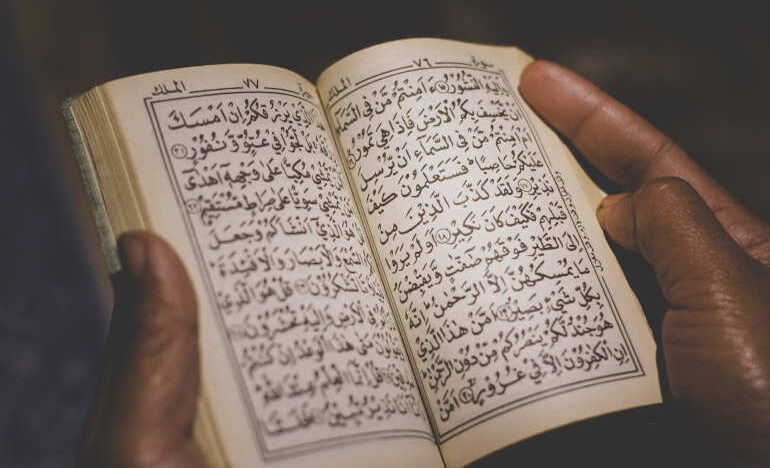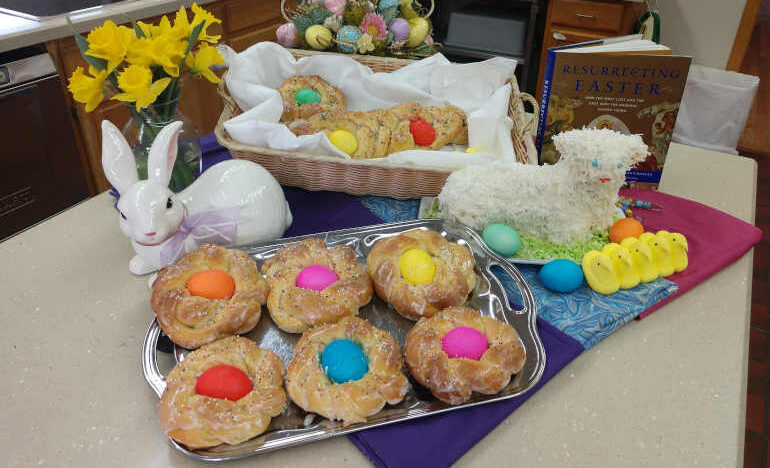The Messenger of God: The First Pillar of Islam, Part Two

By Kathy Keary
Part 10. The full series is here: The Contemplative Spirit of Islam.
Throughout the ages, God has raised up prophets to inspire others by their words and actions. Moses, Isaiah, Siddhartha Gautama (aka the Buddha), St. Paul, Muhammad, St. Teresa of Avila, Mahatma Gandhi, Thomas Merton, Nelson Mandela, Martin Luther King, Jr., and Mother Theresa are but a handful of those who have captured our attention by their wisdom, generosity, and compassion.
This trend continues today with many being summoned to preach the Good News in a world where love and social justice often run scarce. Tenzin Gyatso (aka the Dalai Lama), Imam Jamal Rahman, Mirabai Starr, Sue Monk Kidd, Joyce Rupp, and James Finley are among today’s voices encouraging a conversion of hearts and calling the world to a better place.
Last week we began looking at the five pillars of Islam, and noted that the first pillar is “There is no God but God; Muhammad is the Messenger of God.” In our last article, titled Embracing the Mystery of God: The First Pillar of Islam, we examined the first part of that phrase. Today we will explore the second part: “Muhammad is the Messenger of God.”
The Prophet Muhammad is a central figure in Islam. Through the ages, the example of his life has inspired a multitude of people. It is important to note that Muslims consider Muhammad to be a prophet, not a deity.
The Qur’ān advises that numerous prophets came before Muhammad, and nothing has been revealed to him that was not revealed to God’s other messengers. The Islamic faith elevates all these prophets but particularly reveres this man who was “completely human and yet completely immersed in the sacred” — the one who transmitted the Qur’ān to them (Rahman, 90, 91).
Note: Never miss an article published on the Renewal Center website: Sign up to receive our newsletters.
This historical figure was born in Mecca, Arabia, modern day Saudi Arabia, in the year 570 C.E. Sadly, he was orphaned at a young age. It was reported that when Muhammad was two years old, two angels split open his chest and purified his heart with snow. His grandfather was the keeper of the Ka’bah, a building at the center of Islam’s most important mosque located in Mecca. The grandfather took Muhammad to the Ka’bah daily. It is believed Muhammad was exposed to both Christianity and Judaism as a young boy (St Michael, 23).
As Muhammad was growing up, the people in this area had fallen into polytheism even though they were exposed to monotheism and traced their roots to Abraham. As an adult, he patiently withstood persecution for preaching the Oneness of God. He was forced to migrate to current-day Medina where he fulfilled many roles: administrator, community builder, political and military leader, mediator, judge, treaty maker, spiritual leader, and prophet (Rahman, 90).
The Angel Gabriel originally appeared to Muhammad when he was alone in a cave at the age of forty. Muhammad discounted the experience thinking he had gone mad. His wife assured him that he will be the prophet of the nation. After some time passed, Muhammad was once again visited by the Angel Gabriel who proclaimed: “Oh Muhammad, you are in reality the prophet of God, and I am Gabriel” (St Michael, 24).
This encounter with Gabriel is known as the Night of Power during which time Muhammad was transformed into a prophet and the first verses of the Qur’ān “descended upon the Prophet from the depths of Mystery in the stillness of the cave.” These transmissions from the heavens continued for 23 years.
Jamal Rahman (Rahman, 91) summarizes three key aspects of the Night of Power that speak to the nature of the spiritual journey:
- The Qur’ān has its roots in the womb and mystery of silence.
- The verses of the Qur’ān were revealed little by little.
- The Qur’ān asks us to expand our mind and heart in the journey of surrender.
Muhammad experienced another mystical event known as the Night Journey when he was transported from Mecca to Jerusalem where he ascended through seven levels of heaven. When he reached the seventh level, he sensed a heartfelt desire to ascend further to come closer to God. In response to an inner voice, he abandoned his ego and became love. On the wings of love, he was able to complete his ascension. Rahman (Rahman, 92) cites two significant points about this event that are necessary requirements for spiritual growth:
- Only by experiencing true love are we able to ascend into our highest states.
- The horizontal and vertical journey suggests the importance of working equally in the visible and invisible realms.
There is so much more to be said about the second part of this First Pillar. Stay tuned for our next article where we will further explore this topic by delving into the insights that the Night of Power and Night Journey reveal about the contemplative life.
References
St. Michael, Louis. Jesus and Muhammad: Their Messages, Side by Side. Rising Myrrh Press, April, 2018.
Rahman, Jamal. The Fragrance of Faith: The Enlightened Heart of Islam. Bath, England: The Book Foundation, 2004.
Image by Fauzan My from Pixabay
[Kathy Keary, a Precious Blood Companion and spiritual director, holds a master’s degree in theological studies and is a graduate of the Atchison Benedictine’s Sophia Center’s Souljourners Program, an intense study of spirituality and spiritual direction. Kathy believes that the divine is present and active in all of life and encourages others to be awakened to the God in all including the divine within. She enjoys accompanying others on their journey to wholeness discovering the person they were created to be.]
We’d Like to Hear From You!
We’d like to know what you think about this article. Send us a comment using the form below. Do you have a suggestion? Is there something you want to learn more about? Send us a note.
Related

Easter Bread (Pane di Pasqua)
By Lucia Ferrara
Easter bread is a fun bread. It’s a fun bread to make with your children, with your family, with neighbors and friends. The tradition of Easter bread dates back centuries and comes from many parts of the world.

Easter Sunday, the Resurrection of the Lord
Today’s scriptures tell us how three days changed the world. How have they changed you?
Categories
Assembling God's Puzzle Coffee with Padre Cooking & Spirituality Encounters of the 4th Kind Family Matters Reflections on the Eucharsitic Prayers Spiritual Resources Taize Prayers The Contemplative Life Traveling with Pilgrims of Hope Uncategorized Videos Week of Prayer for Uhristian Unity When you need a little help
